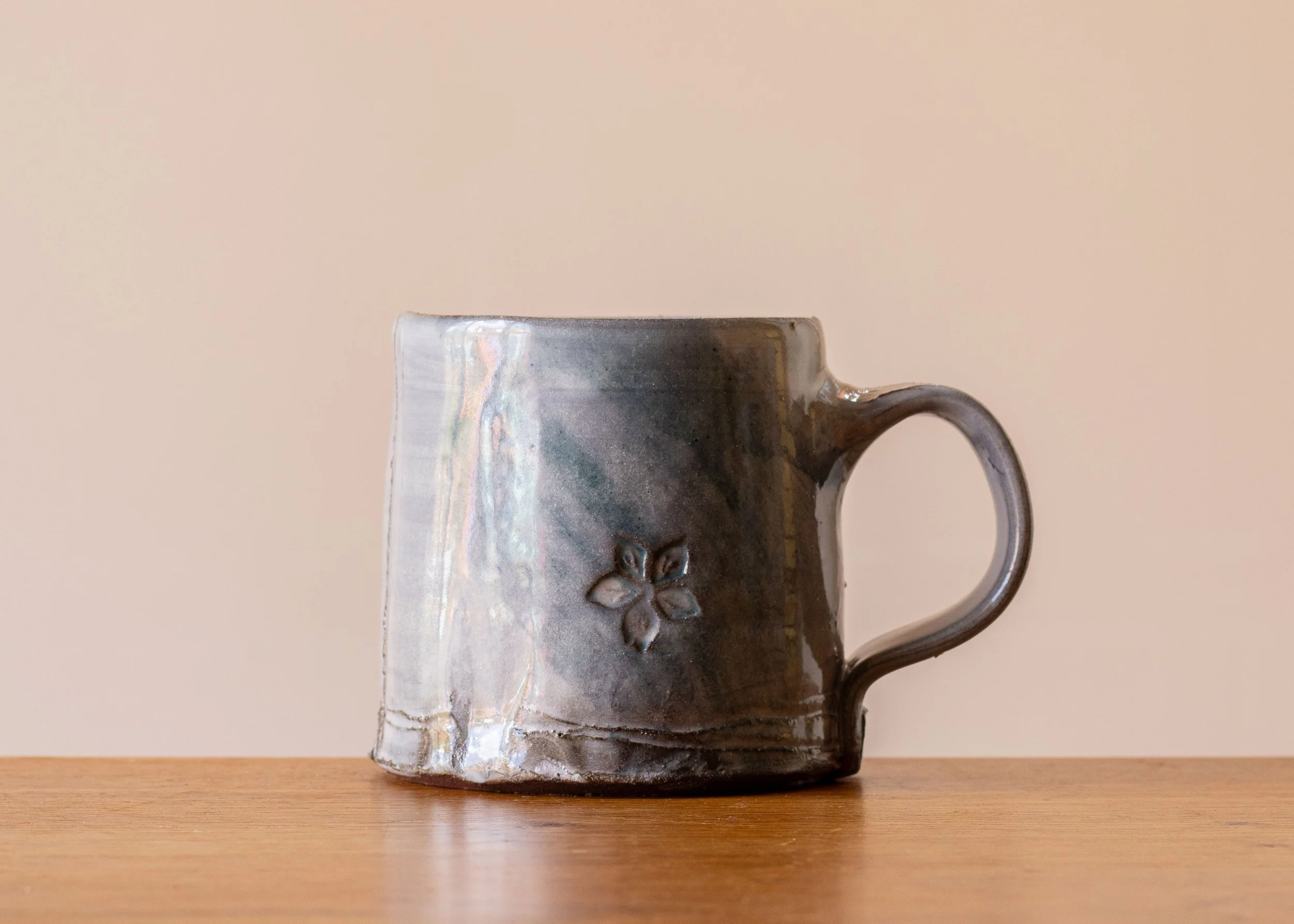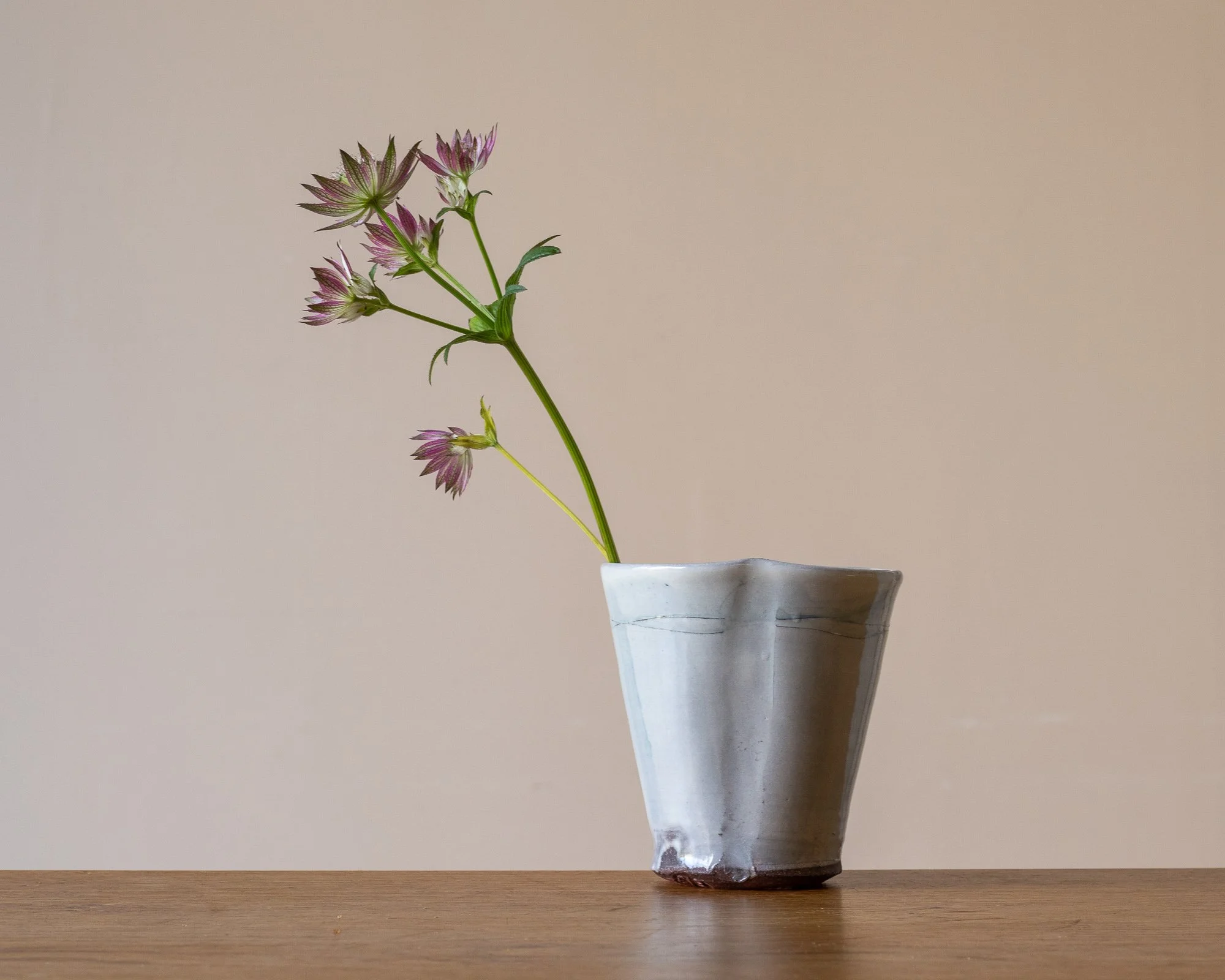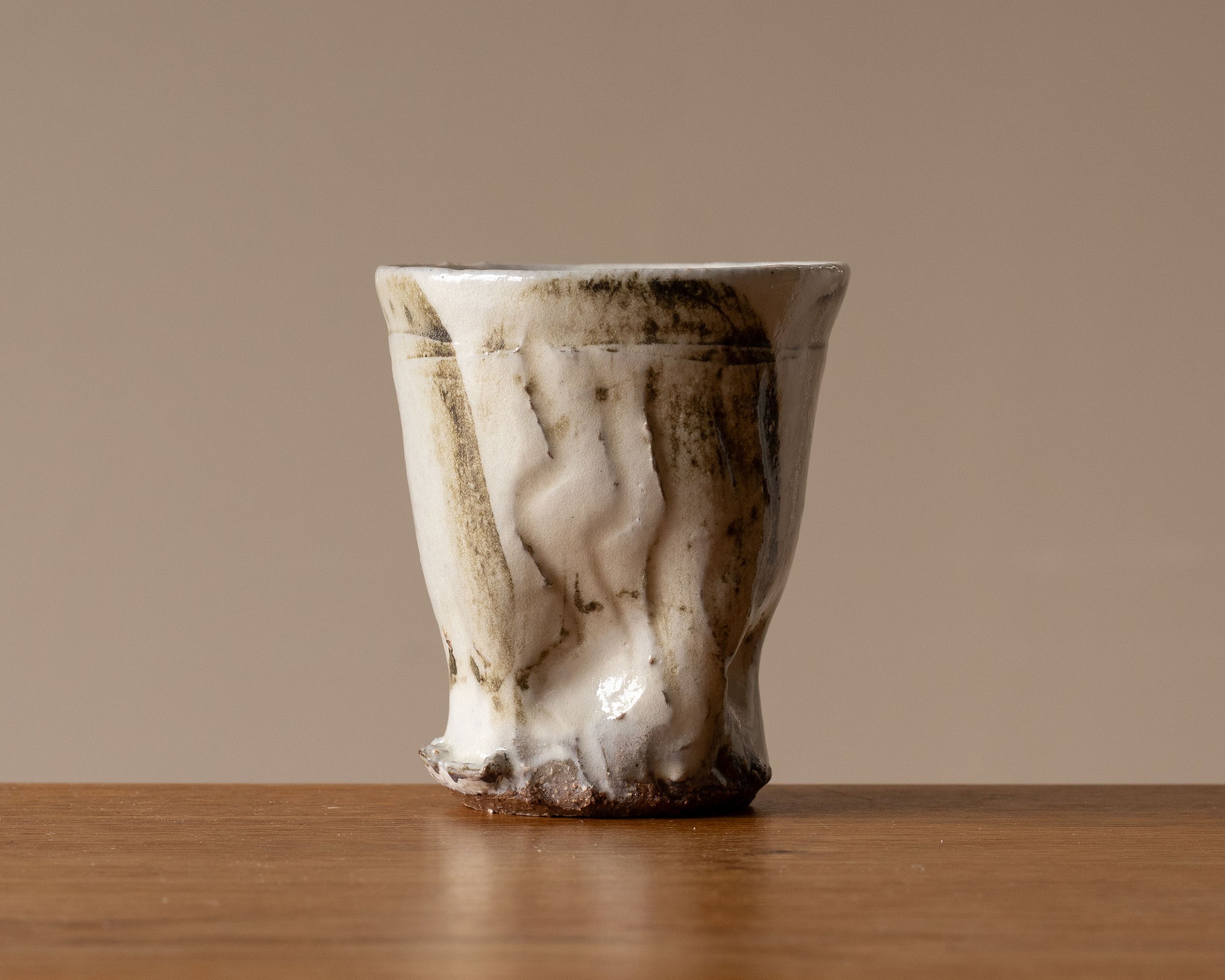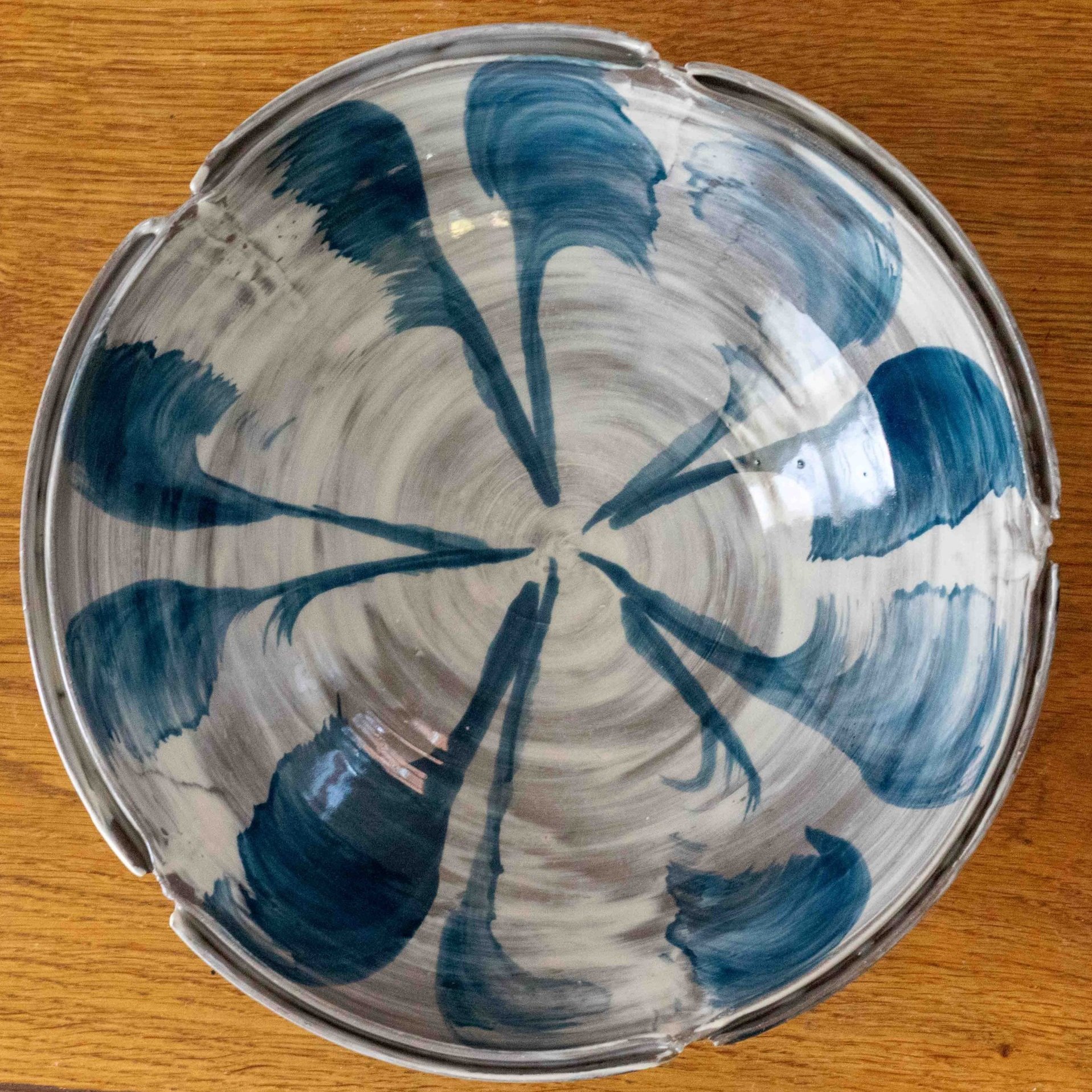
Abstraction & Abstract Expressionism
A number of themes emerge when looking back at the history of ceramics during the twentieth century in the Northern hemisphere. First, I have to mention Bernard Leach. Sometimes seen as ‘The Father of Studio Pottery’, his influence on UK ceramics is without doubt. I mention him because Abstraction and the Modernist movement is a contrast to his work…..

Buncheong, back to Korea and a bit of history
Buncheong ceramics came into being in Korea during the Joseon dynasty of rulers in the 15th and 16th centuries. Prior to this time, during the rule of the Goryeo dynasty, a fine green glazed stoneware ceramic was made in Korea.

Slip, Glorious Slip
Ah slip. I think that I am in love with it. I love how it’s really, well, messy. In it’s most simple form, slip is just clay that has had water added to it. And if I used a pale coloured clay then most likely this would be how I would make my slip.

Form and Function
Many years ago I asked an evening class teacher about whether my pot ‘looked right’. They replied, possibly rolling their eyes ‘oh, you mean aesthetics’. Yes, I did. But the conversation didn’t get very far. In fact, it’s only recently that I really think that I have been able to consider this issue any further.
But what I have known for a long time is that I am interested whether my pots ‘look right’.

Throwing, my happy place
Throwing is a skill, learnt through repetitive practice. Muscle memory allows your hands to remember and know what to do once you have learnt the technique. But for me, it is still an action that requires concentration, hard work and judgement.
The feeling of throwing is……

Why make marks 3. Nature is Imperfect.
This is the last instalment of why I make marks, before I move on to other areas of interest.
In the natural world there is no judgement, just beauty. The lopsided growth of a tree, the flower with a petal blown away, the distorted leaf on the tree, are all beautiful in their own right, despite not being perfect. They are expressions of the beauty of natural variation which of course we know is so fundamental to life on this planet as we adapt to changes in our environment. This is a draw for me. Imperfection, impermanence, non-judgement are all ideas that I would like to express through my pottery.
I use sticks that I have foraged from either my garden or around me in the Kent countryside to mark the wet clay that I have just thrown on the wheel. I really like this idea; of truly bringing nature into the surface of the pot to increase the connection between the pot and the natural world around me. It also means that the connection between the person who uses the pot can, through having a relationship with the pottery, connect with the natural world and the emotional resonance that the natural world evokes in them.

Why make marks 2. The Dialectic of Permanence/Impermanence.
You might want to settle down with a cup of tea (ideally in one of my mugs) it’s a long one…
Let’s deal with a few definitions first. Dialectic means “a way of discovering what is true by considering opposite theories” (Cambridge Dictionary, online). This is another idea that has come from my background in psychology.
A further concept that I relate to from my psychology days is that of Mindfulness. It’s a mainstream idea now, and I learnt that this is about bringing awareness to one thing in each moment of time, in a non judgemental manner. So, being accepting of things being the way that they are. This can be brought to small moments in time (I made that mark in the clay like that and now I can’t change it) or big existential concepts (life is a transient thing). Both scenarios require acceptance of the situation as it is, noticing when judgements are made in your mind, in order to try to give some space between you and your thoughts.
And thirdly (stick with me here) there is Wabi Sabi…….

Why make marks 1: The nature of the material.
One of the most wonderful features of clay is that it is plastic when it is wet. This means that you can move it, bend it, fold it - and make marks in it. Some of the earliest pots have rope or stick marks in them. I guess humans have always wanted to explore and see the consequences of their actions on materials.

My Clay
I’ve worked with many different clay bodies in my pottery journey over the years, mainly stoneware bodies. These fire to quite a high temperature (1200⁰C -1300⁰C), being in between earthenware firing temperatures (1100 - 1200⁰C) and porcelain (1300 ⁰C and above). I like stoneware because it is durable for everyday use, meaning it doesn’t chip quite so easily as earthenware, and more often than not, it becomes vitrified in the firings. This means……

Introduction. A context, Clay.
In this series of blogs I am hoping to explore more deeply what I like to do as a potter and why I do those things.
I thought that I would start at the beginning, with the clay itself. People have been digging into the ground for many thousands of years, using what they found there to improve their lives. Human curiosity and creativity is insatiable. Somewhere, someone, 10,000 years or so ago¹, realised that clay when placed in a fire creates a different material and ceramics was born.
My pots are merely a tiny step in this long lineage, connecting the distant past with life in the 21st century. Like so many UK potters my work is partly informed by Japanese and Korean ceramics. There is a rich history of the transfer of ideas…